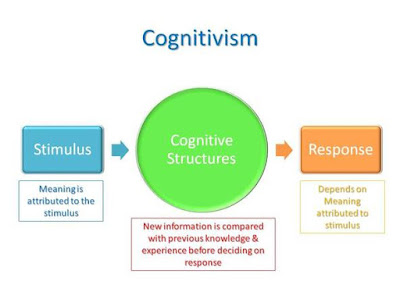It is
the most widely used model of information processing. It is essential a model
of human memory. This model is first proposed by Richard Atkinson and Richard Shiffrin in the year 1968. The model is also known as “modal model of memory” or multi-store model.
The modal
model of memory makes an important distinction between two types of information
storage (i.e. memory). These are: short-term
memory (also called working memory),
and long-term memory. In some
versions of the model, a third memory component is included and that is short-term sensory storage (which is
also called sensory memory). Altogether, there are three separate components of human memory asserted by this model.
Distinctions
among the three types of storage are concerned mainly with the nature and
extent of the processing that
information undergoes.
Processing
refers to activities such as paying attention, organizing, analyzing,
synthesizing, and rehearsing.
Also,
the three types of storage differ in their capacity and in the extent to which
their contents are accessible.
This basic
information processing model of cognitive psychology does two related things:
First, it provides us with an overall model of human memory. Second, it
addresses various learning-related questions that are critically important for
teachers—questions concerning how information is organized and sorted, which
teaching and learning methods can facilitate information processing, and how
memory can be improved.
Sensory Memory:
Our
sensory systems (vision, hearing, taste, touch, smell) are sensitive to an
overwhelmingly wide range of stimulation. However, they respond only to a
fraction of all available stimulation at any given time; the bulk of the
information available in this stimulation is never actually processed—that is,
it never actually becomes part of our cognitive
structure.
Sensory
memory is the label used to describe the immediate unconscious effects of
stimulation. Sensory memory is highly limited, both in terms of the length of
time during which stimulus information is available for processing and in the
absolute amount of information available. In other words, sensory memory is no
more than the immediate sensory effect of a stimulus.
Much of
the stimulation to which we are not actually paying attention is nevertheless
available for processing for perhaps a fraction of a second.
For example,
if you are engaged in a conversation with someone in a crowded room, you might
be totally unaware of what is being said in any other conversation. But if the
topic in one of these other conversations turns to something that passionately
interests you, you suddenly become aware of what you would not otherwise have
heart. This occurrence is labeled the cocktail
party phenomenon.
Short-Term Memory:
Sensory
memory precedes attention; it is simply the effect of a stimulus before you pay
attention to it. When you attend to a stimulus (in other words, you become
conscious of it), it passes into short-term memory.
Short-term
memory consists of what is in our immediate consciousness at any given time. It
is a sort of scratch pad for thinking; for this reason, short-term memory is
often called working memory.
One of
the important characteristics of short-term memory is that it is highly limited
in capacity. Its average capacity is about seven separate items (plus or minus
two); that is, our immediate conscious awareness is limited to this capacity,
and as additional items of information come in, they push out some that are
already there.
Short-term
memory lasts a matter of seconds (not minutes, hours, or days). It appears to
be highly dependent or rehearsal. That is, for items to be maintained in
short-term storage, they must be repeated. In the absence of repetition, they
quickly fade, usually before 20 seconds have elapsed.













